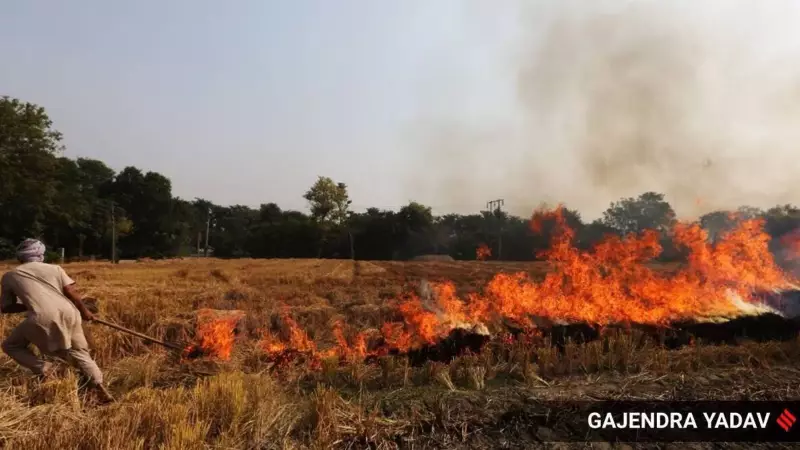
Air Quality Commission Takes Action Against District Administration
The Commission for Air Quality Management (CAQM) has issued a formal notice to Fatehabad's Deputy Commissioner Dr Vivek Bharti, demanding an explanation for the sudden surge in stubble burning cases within the district. This action comes after Fatehabad recorded 28 separate farm fire incidents within just two days - November 8 and 9 this year.
Alarming Numbers Despite Overall Improvement
While Haryana has shown significant progress in reducing stubble burning overall, with only 206 incidents reported between September 15 and November 6 compared to 888 during the same period last year, Fatehabad's recent performance has raised serious concerns. The commission revealed that the district has witnessed 59 paddy residue burning events between September 15 and November 9, with 48 of these fires occurring in the first nine days of November alone.
The CAQM notice specifically highlighted that the 28 fire incidents reported on November 8 and 9 indicate a significant spurt in fire incidents that cannot be ignored. The commission expressed disappointment that despite multiple review meetings and statutory directions aimed at completely eliminating paddy stubble burning during 2025, adequate supervision and effective implementation appears lacking in Fatehabad.
Legal Consequences and Deadline
The air quality panel has directed Deputy Commissioner Dr Vivek Bharti to clarify why legal action should not be initiated under Section 14 of the Commission for Air Quality Management in National Capital Region and Adjoining Area Act, 2021. The commission has set a strict deadline of 5 pm on November 17 for receiving the explanation, warning that failure to respond would result in immediate action under the provisions of the Act.
CAQM officials noted that the continuing high level of paddy stubble burning events in Fatehabad constitutes an offense punishable under the Act, emphasizing that the situation requires immediate corrective measures.
Haryana's Counter-Narrative and Ambitious Goals
Contrasting with CAQM's strict stance, the Haryana government has presented a more optimistic picture of the state's progress in tackling stubble burning. Following a high-level meeting on November 7, the state government issued an official release claiming that CAQM chairperson Rajesh Verma appreciated the collective efforts of state officials and farmers in reducing stubble burning incidents.
The government release specifically highlighted praise for Karnal and Kurukshetra districts for their significant progress in curbing paddy residue burning. Haryana Chief Secretary Anurag Rastogi asserted that the state is on track to become a zero stubble-burning state within the next two years, having achieved remarkable progress in curbing crop residue burning.
Three-Pronged Strategy and Financial Incentives
Chief Secretary Rastogi detailed Haryana's comprehensive approach to managing crop residue, which includes:
- In-situ management - dealing with stubble within the fields
- Ex-situ utilisation - using stubble for other purposes
- Fodder use - converting residue into animal feed
This strategy is being implemented across the state's 39.31 lakh acres of paddy cultivation. To encourage sustainable farming practices, the government has enhanced financial incentives substantially:
- Rs 1,200 per acre for in-situ and ex-situ management
- Rs 8,000 per acre for crop diversification
- Rs 4,500 per acre for Direct Seeding of Rice (DSR)
The state has earmarked a total of Rs 471 crore for these initiatives, demonstrating significant financial commitment to solving the stubble burning problem.
Technological Interventions and Machine Distribution
Haryana is also leveraging technology and equipment distribution to combat stubble burning. The government is distributing free bio-decomposer powder, with Chaudhary Charan Singh Haryana Agricultural University in Hisar implementing this technology on 2 lakh acres.
Under the Crop Residue Management (CRM) scheme for 2025-26, the state has sanctioned 7,781 machines worth Rs 94 crore, supported by overall funding of Rs 250.75 crore jointly contributed by the central and state governments.
Despite the recent spike in Fatehabad, the overall reduction of stubble burning incidents by 77% compared to last year indicates that Haryana's comprehensive approach is yielding positive results, though the commission believes there's room for further improvement.





